Hello! It's Joshua here and I like to talk about Western music. In this 11th article, I’m going to dive into one of the longest-lasting bands in history: Fleetwood Mac. Their formation dates back to 1967, which means they’ve been around for an incredible 54 years!
Speaking of 1967, that year was a pivotal moment in world history. In the United States, anti-Vietnam War movements were gaining momentum, while in China, the Cultural Revolution was raging. Meanwhile, Japan hadn’t yet established diplomatic relations with China. The Toyota HiAce was newly released in Japan , and Takara launched the iconic Licca-chan doll.
This was also the era when the Group Sounds movement was thriving in Japan, with musicians like Masakazu Sakai, Kenji Sawada, and Kenichi Hagiwara emerging onto the scene. It's hard to think about how much time has passed since then!
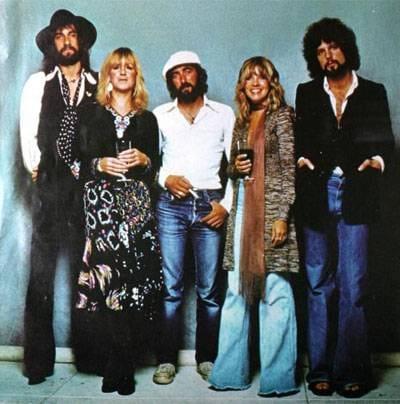
In the 1960s, one of the key figures who helped spread blues music in the UK was John Mayall. His band, John Mayall & the Bluesbreakers, included members who would go on to form their own legendary band, Fleetwood Mac. The three members Peter Green (guitar, vocals), Mick Fleetwood (drums), and John McVie (bass) left the Bluesbreakers and, along with Jeremy Spencer (guitar, vocals, keyboards), formed Fleetwood Mac.
For context, the band name "Fleetwood Mac" is a combination of Mick Fleetwood and John McVie's last names. (It’s also worth noting that before Peter Green joined the Bluesbreakers, Eric Clapton was the band's guitarist.) At the time, Fleetwood Mac was a pure blues band and Peter Green’s guitar playing, in particular, was highly praised. Peter Green’s cherished guitar, a 1959 Gibson Les Paul, would eventually end up in the hands of Gary Moore, and is now owned by Kirk Hammett of Metallica.
■ Oh Well
Peter Green left the band due to drug-related mental health issues, and after that, Fleetwood Mac saw a constant change in guitarists. Christine Perfect, a female vocalist and keyboardist who had been associated with the band, eventually joined as a full-time member and married John McVie, becoming Christine McVie. As the band moved away from their pure blues roots, they leaned more into rock, but continued changes in the lineup and lackluster commercial performance made things unstable for a while.
They eventually relocated from the UK to the US and brought in Lindsey Buckingham (vocals, guitar) and his musical and romantic partner Stevie Nicks (vocals). Mick Fleetwood initially approached Lindsey to join, but Lindsey insisted that Stevie must be brought on as well. Surprisingly, the band accepted them both, turning Fleetwood Mac into a five-piece band with two women and three men.
The blues influence largely disappeared and was replaced by Lindsey's intricate fingerpicking guitar work, his unique vocal style, and Stevie's mysterious and alluring presence. With Christine still in the lineup, the band now had three distinct vocalists and songwriters, each bringing something unique. The result was a sound that was more pop-oriented and accessible that found a massive audience.
The 1975 album Fleetwood Mac featured hits like "Rhiannon" (by Stevie), and was a commercial success. But it was 1977’s "Rumours" that became a full-blown phenomenon. Singles like “Don’t Stop” (Christine), “Dreams” (Stevie), and “Go Your Own Way” (Lindsey) became massive hits. The album topped the U.S. charts for 31 consecutive weeks—an extraordinary feat by any standard, past or present. Even considering how differently music was consumed in the 1970s, it remains a staggering achievement.
■ Go Your Own Way
"Rumours" became a monumental commercial success. While the biggest reason was its catchy, upbeat pop-rock sound, another major factor was the raw, real-life drama unfolding within the band. Christine left John due to his worsening alcohol problems and, rather dramatically, began dating a lighting technician right in front of him. Lindsey and Stevie’s relationship fell apart, and Mick’s marriage also ended—followed by an affair with Stevie after the album was released. It was a whirlwind of emotional turmoil, betrayal, and tangled relationships.
These personal dramas weren’t just tabloid fodder—they became the very fabric of the songs. The lyrics were often drenched in love, anger, and resentment. What’s impressive is how the band managed to channel all that pain and chaos into a coherent and powerful artistic statement. “The Chain” is the only track credited to all five members and the chorus, “The chain keeps us together” became a symbolic reflection of their complicated relationship during that period.
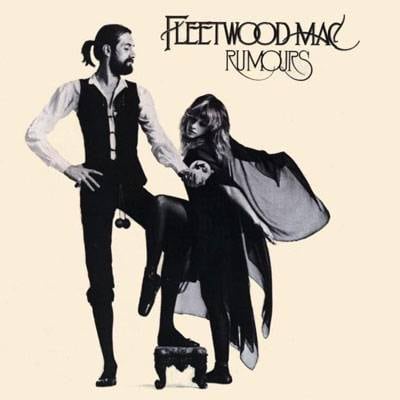
With a mega-hit like "Rumours" behind them, the pressure for a follow-up was immense. Naturally, the next album would be difficult to produce. Lindsey responded by leaning into experimentation, resulting in the ambitious double album Tusk in 1979. The band continued releasing albums while also pursuing solo careers, but in 1987, Lindsey left the band, followed by Stevie later on.
In 1997, however, the classic "Rumours" lineup reunited to release the live album The Dance, marking a renewed chapter for Fleetwood Mac.
■ “The Chain” (The Dance version)
The lineup changes didn’t stop there. Christine announced her retirement and the band released Say You Will in 2003 without her, followed by a wildly successful tour. Then in 2014, Christine returned, seemingly bringing the band back to its classic, golden-era lineup. But just when fans thought things were back on track, Lindsey was fired in 2018 due to his hesitance to commit to the band’s touring schedule.
Still, Fleetwood Mac marched on. They brought in Crowded House’s Neil Finn on vocals and Mike Campbell of Tom Petty & the Heartbreakers on guitar for the tour, which turned out to be a commercial success.
Lindsey took legal action over his dismissal, but eventually settled. For a while, he hinted at a possible return and he mentioned that he was still in touch with Mick. However, tensions flared up again when he publicly criticized Stevie’s behavior around the time of his firing, and Stevie responded in kind. Yes—Fleetwood Mac's saga of drama, heartbreak, and reconciliation is still very much ongoing.
I was lucky enough to see them live during the 2003 tour; once at the MCI Center in Washington D.C., and again at the Allstate Arena near Chicago. The show opened with “The Chain”, followed by a set full of iconic hits and new, bold material from Say You Will. One of the most touching moments was when Stevie and Lindsey performed “Landslide” together with just her voice and his acoustic guitar, and then they hugged at the end. It hit me then: “Sure, we all love the drama, but it’s their music. No one else can play their music better than they can.”
Stevie and Lindsey are now older, wiser—well, they have grown older at least. I can’t help but hope that they’ll share another hug someday. After all, they’ll forever be bound by the chain, right?
■ May 9, 2003 MCI Center Concert Setlist and Tickets
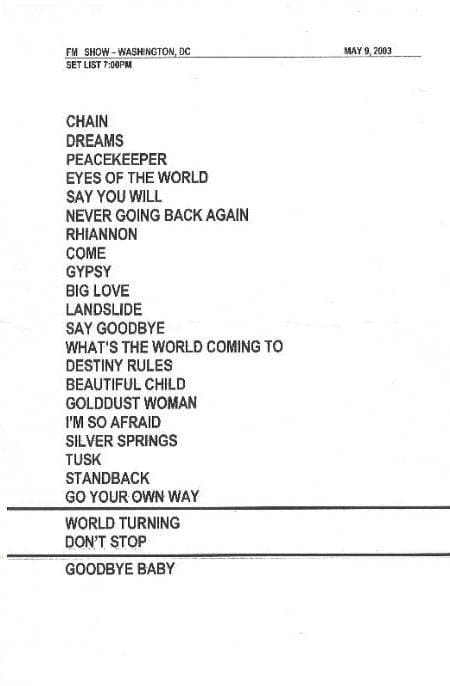
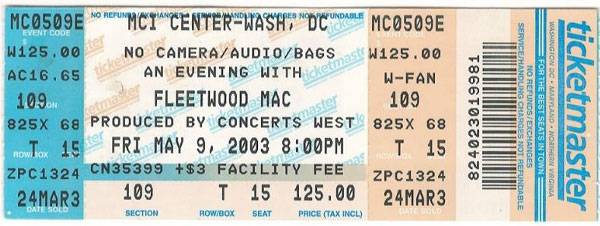
The “sound & person” column is made up of contributions from you.
For details about contributing, click here.












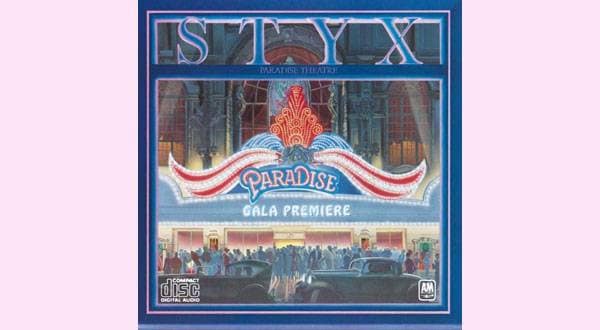

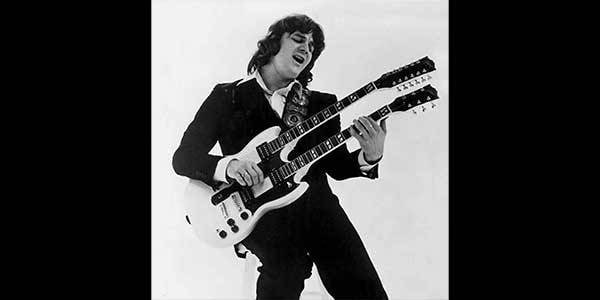

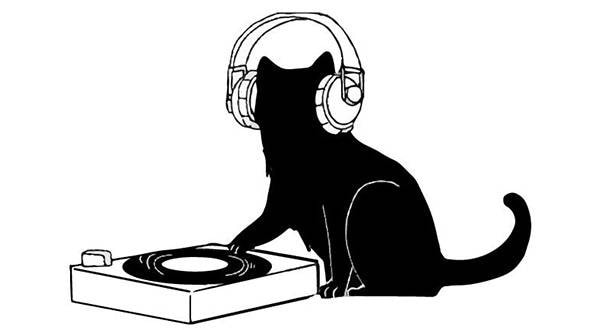
 お化けを倒してサウンドGET!
お化けを倒してサウンドGET!
 ライブ配信に必要な機材
ライブ配信に必要な機材
 バンドあるある相談
バンドあるある相談
 今こそ音楽を始めよう! I’m sound girl
今こそ音楽を始めよう! I’m sound girl
 サウンドハウス社員が選ぶ 『おもしろ商品』はコレだ!
サウンドハウス社員が選ぶ 『おもしろ商品』はコレだ!
 超オススメのフレーズ道場 ギター
超オススメのフレーズ道場 ギター















